The heat is unbearable. It's not the Berkeley weather. It's my stove running at full-tilt during the summer. After completing several runs of jam already this season, I wasn't sure I had it in me to do a full-day of tomato-saucing this year.
It beckons thee
That last part is a complete lie. This is the closest thing to a tradition I've made, so I would rather complain and drink through the whole affair than skip it. How else can I prove its a tradition?
One quick BART ride to the market and back.
The Fruit

One piece of advice when it comes to making sauce with Early Girls – embrace the sweet. At least with Dirty Girl's dry-farmed variety, that aspect is notably consistent year-over-year.
For acidity, it's somewhere middle-of-the-road with robustness on the lighter side. It may not make the most traditional gravy, but that load of natural sweetness registers undeniably as the taste of summer fruit. In the dead-of-winter, with only turnips to look forward to, these flavors activate twice to send you back in time.
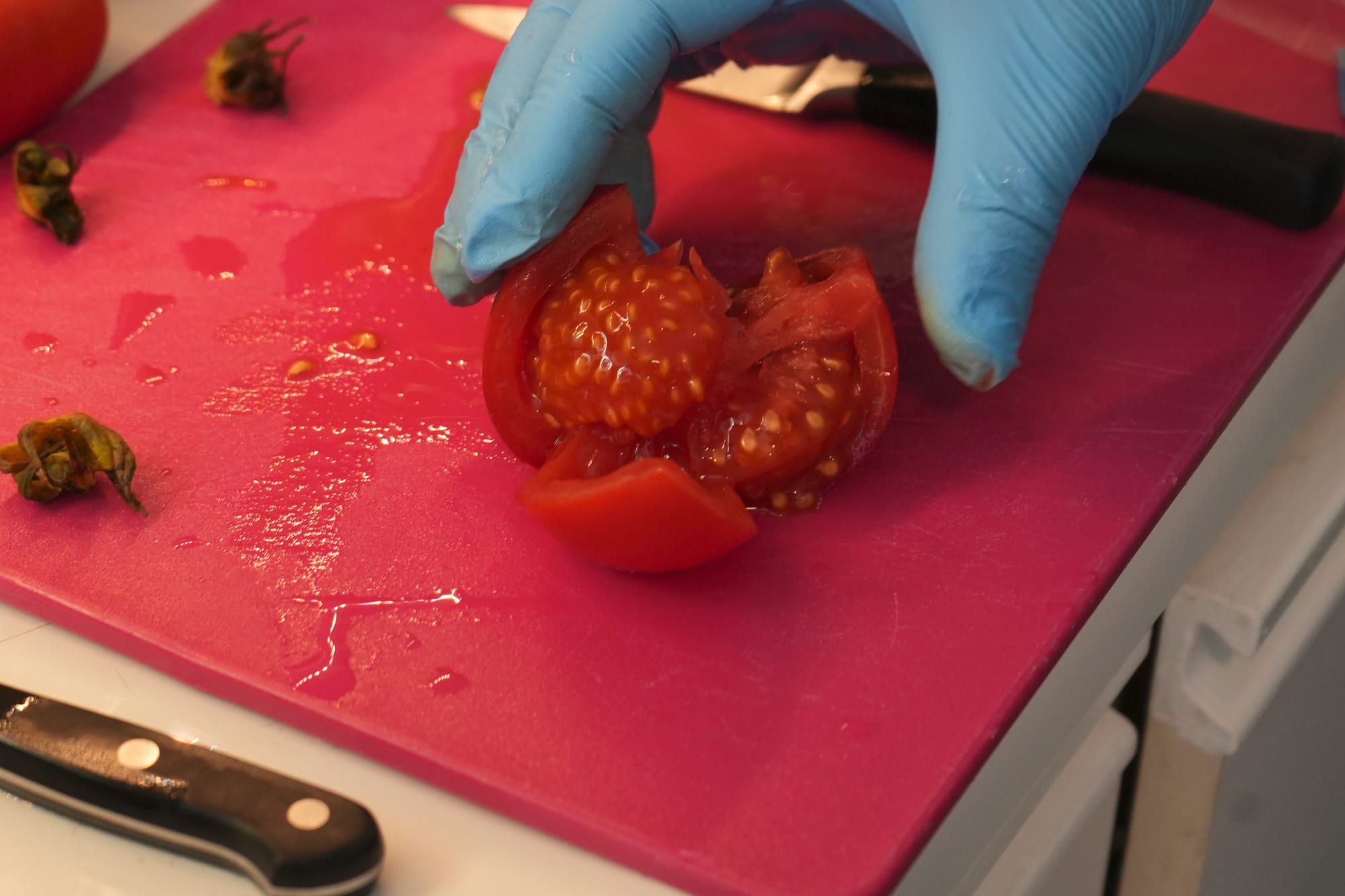
Beyond their taste characteristics, I find Early Girls provide a much smaller concentration of water but yield a significant amount of seeds. This makes them a great candidate for roasting and saucing and more but less viable for sandwich applications. You already have a favorite sandwich tomato though. Right?
For processing, a food mill is a must. You'll see that I get by with a high-pulp filter on a discontinued, poorly rated juicer attachment, so please do better for yourself.
Getting Ready for a Swim

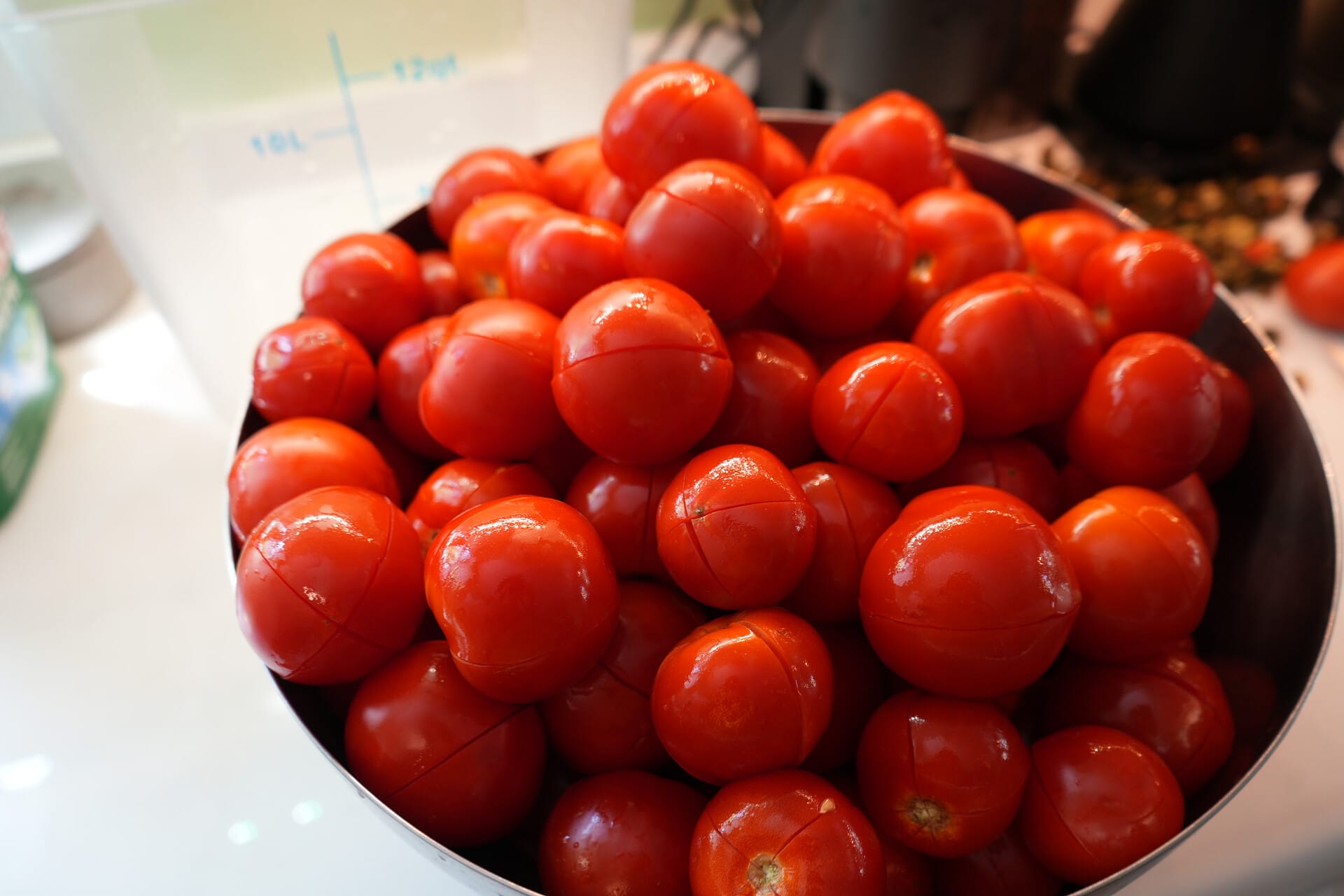
By the end of this day I am personally acquainted with each tomato several times over.
After a quick rinse in an appropriately sized 18-quart vessel, everyone gets a bit of personal treatment for future peeling. Each tomato gets an X scored from stem and back with a paring knife.
I find for both knives sharp and less-than-sharp that keeping it static in one hand while rotating the tomato with the other leads to a more controlled cut. Anything too deep won't necessarily affect how well the skin peels off, but it may cause the tomato to fall apart prematurely before it makes it to the final pot.
Did the Sutro Baths look like this, Papa?
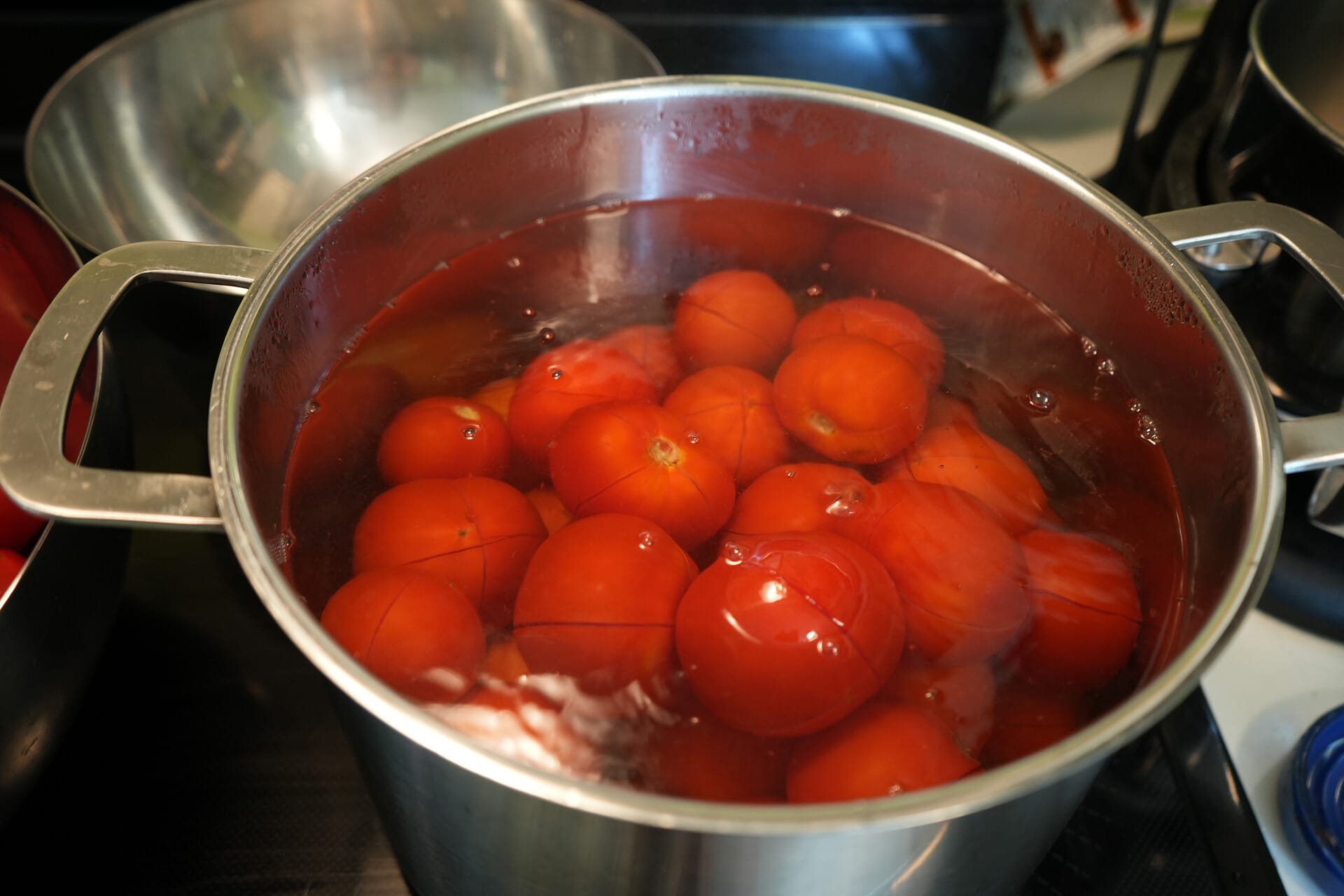
30 seconds to 1 minute in a slow boiling pot.
That's the lower boundary at which the peel separates from the rest of the tomato and the upper boundary where everything generally falls apart. Given I don't utilize an ice-bath, I tend to pull them on the early side and let them steam away in a bin while I continue on other batches.
So long as the water comes back up to temp in-between, the cook will be relatively even across the whole flat. I screwed up in a lot of ways that first year.
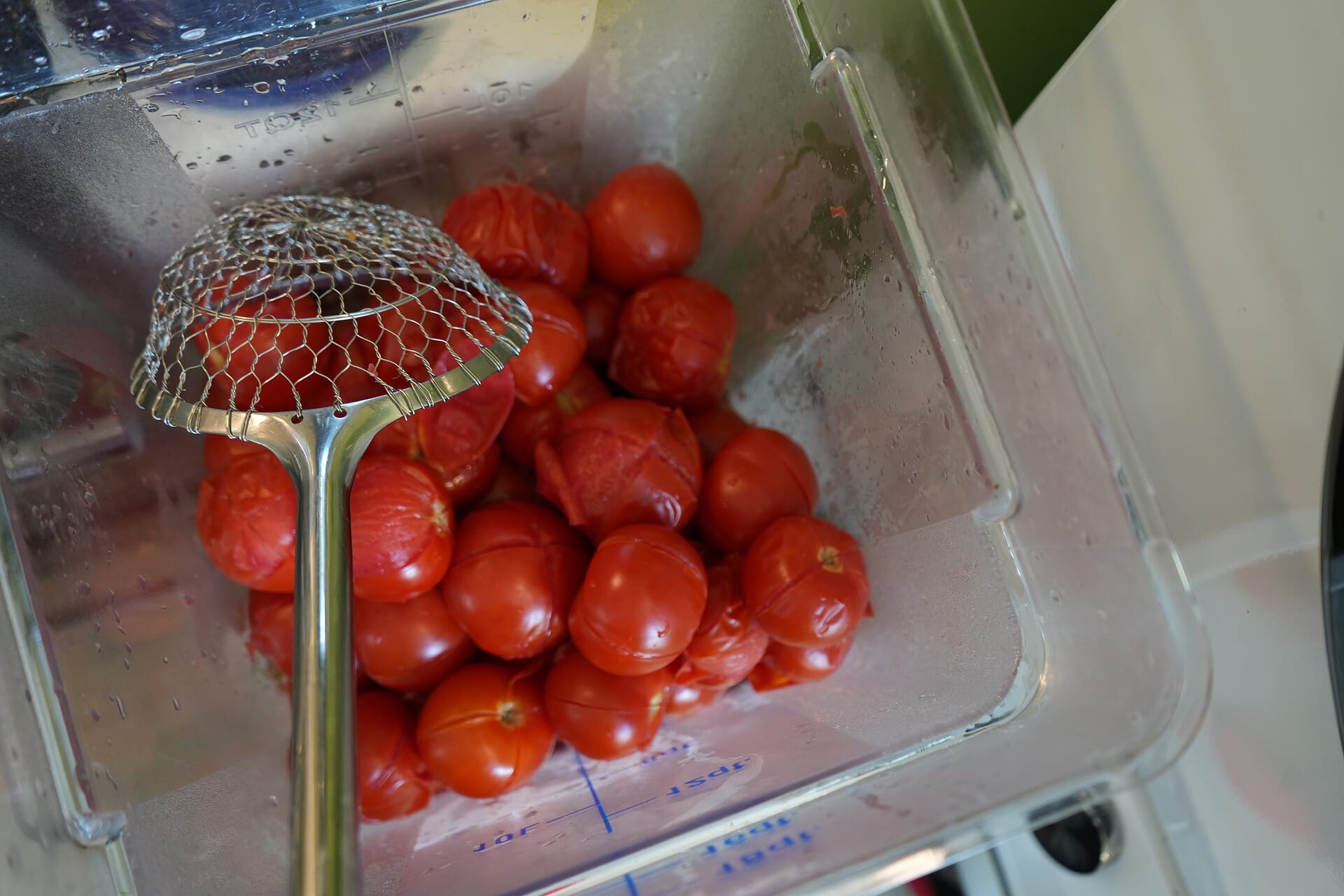
They should look all about the same as when they went in but with a wrinkled and/or already detaching peel.
If they look a bit under, give them more time in the bin.
I have lost far more tomato goodness in the past by giving them a second dunk, so I've removed the practice entirely.
The only acceptable bowl of skins in your house

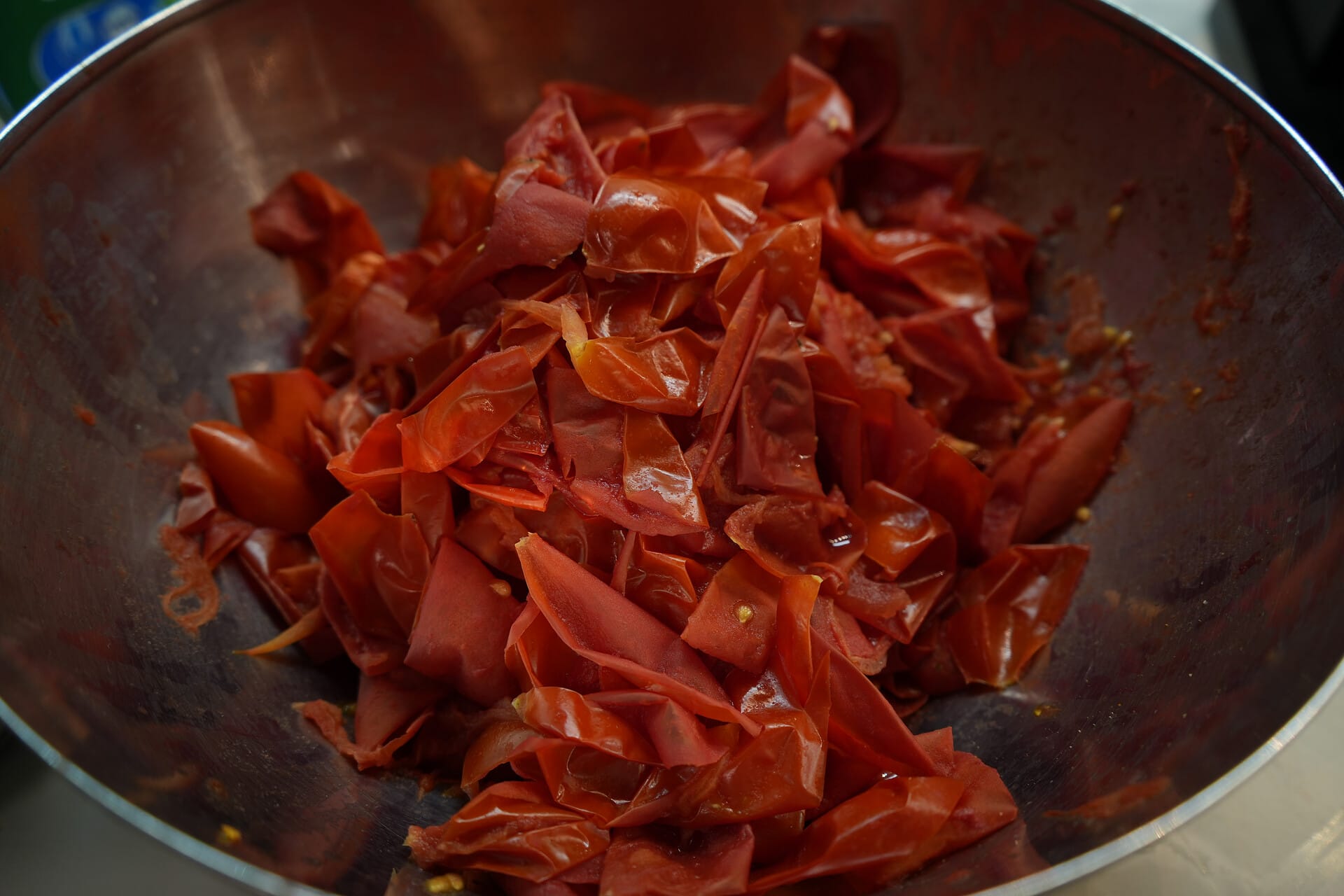
I believe at this point other methods call for going straight into juicing. However, I make tomato powder from the discarded skins that might otherwise get mangled by processing, so I remove the peels by hand for future dehydration.
Also my juicer is inadequate for handling this amount of peel.
That's purely coincidence though.
I'm thinking of starting a company called Juicero

This part is relatively straight-forward. I plop them into the juicer one-by-one.
What comes out should be an unrefined pulpy mess. What gets left behind should be the seeds without their gel covering and any wayward peel.
This might take a while.
...
Time for more mezcal.
The soup to sauce pipeline
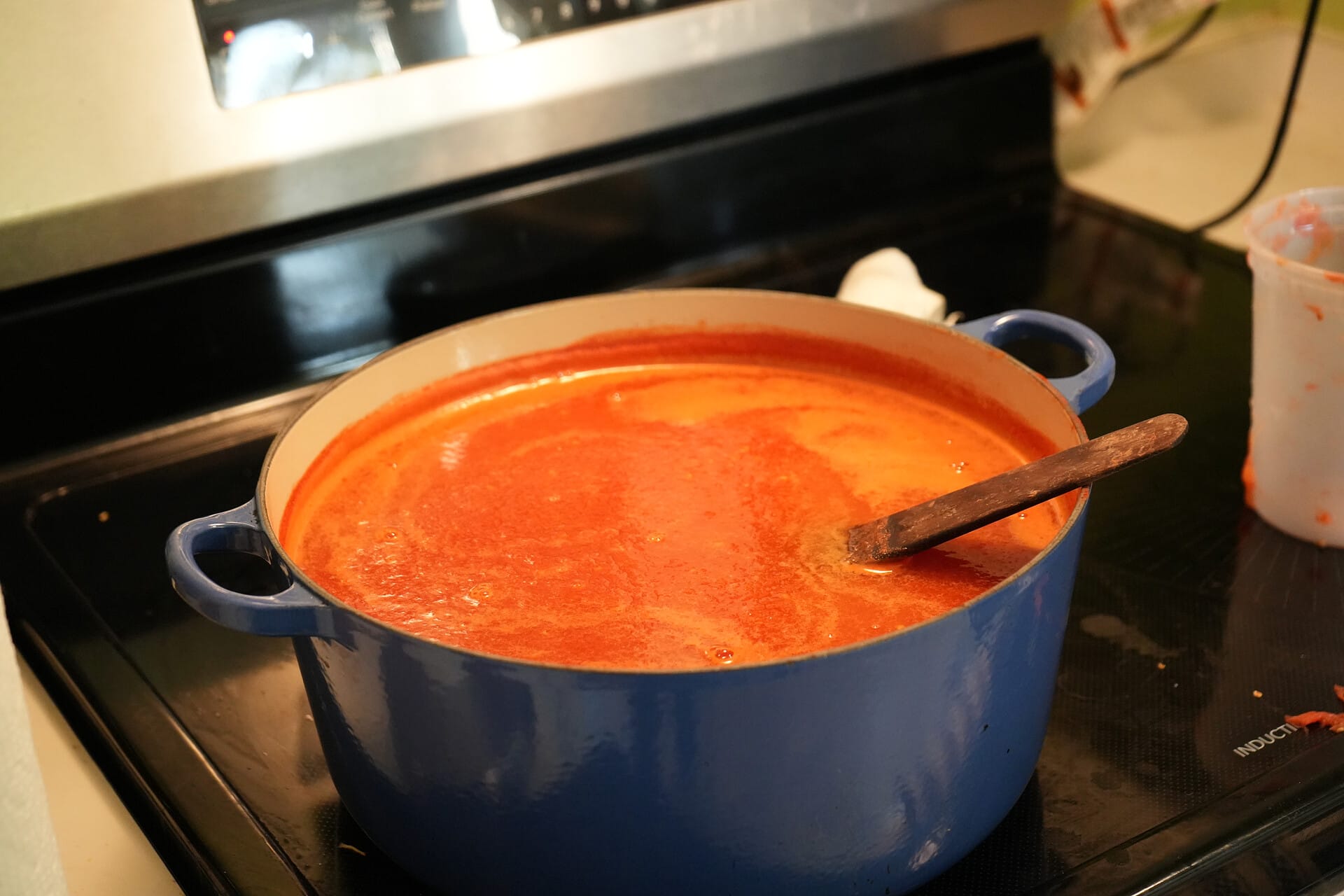
Pour it in a pot and we're ready. No seasoning, no herbs, no vegetables. We are going for versatility first and foremost. Nothing to do here but turn on the burner equivalent for an induction stove-top.
Knowing the limits of my own attention-span, I plan accordingly here.
It's about 7 PM. I got started around 1 PM. I would like to do anything else while disassociating.
This pot is going on low.
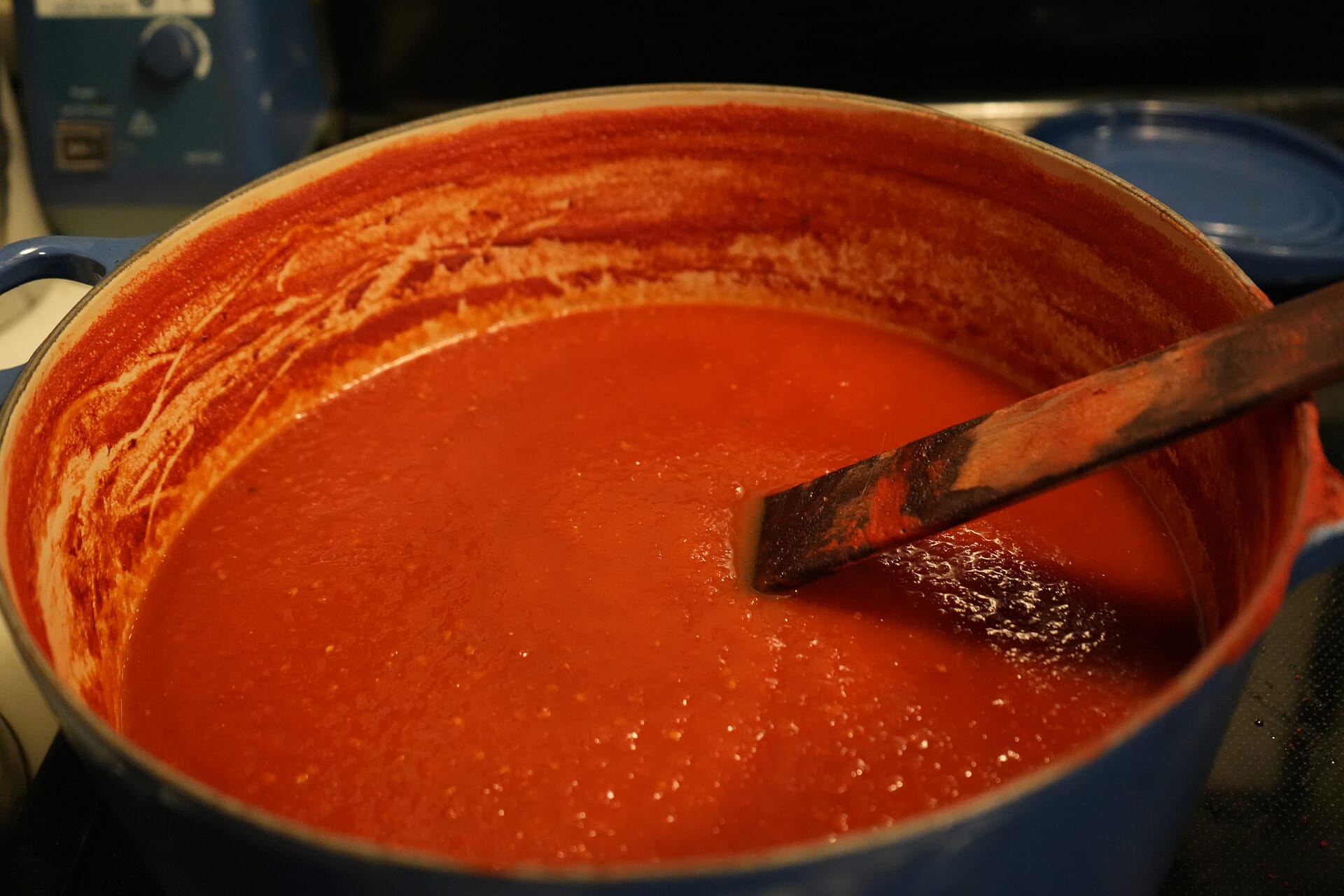
Done! 5-hours later. Half-way reduced.
It might be midnight now, but nothing is burnt and I'm recharged.
Regularly I reduce in about a quarter of that time. This year I have all the time in the world. It's my unemployment.
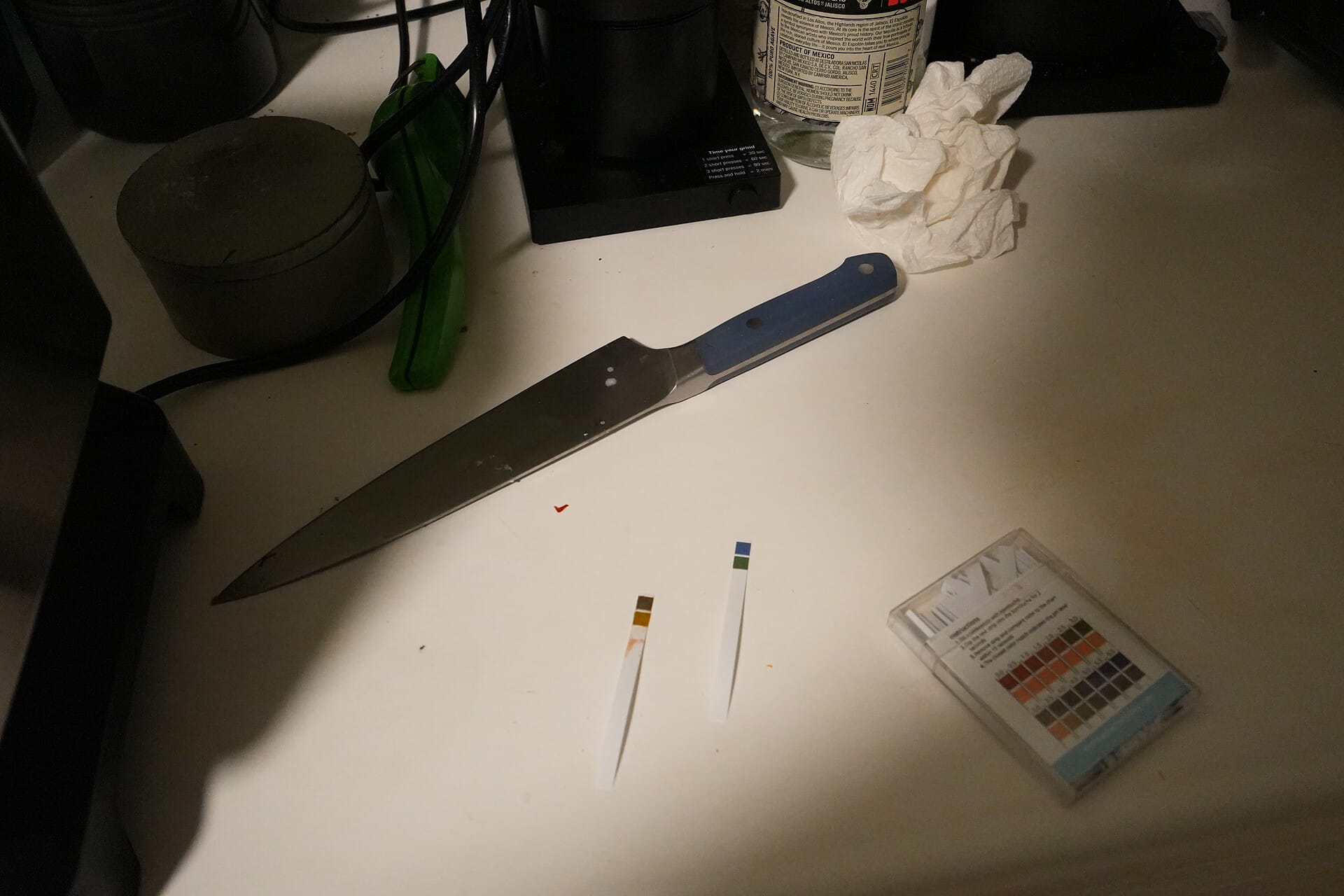
Beyond versatility there's another advantage to making a fairly plain sauce: pH
A pH of 4.6 or lower is required for water bath canning. When there's no additive vegetables like carrots or onions you shouldn't have to worry about backfilling acid to get it to the right level. Adding lemon juice would feel like a personal failure.
I won't judge what you do.
Regardless - always test. I have a ton of strips in a box labeled for kombucha. I test anything and everything I can. I've made no kombucha.
I see around 3.5 for the reduced sauce. Well within the safe range that I don't need someone to double-check against my deuteranopia.
Regarding any salting –
At this point I would normally add the bulk of it by weight for most sauces. But when it comes to canning, however, I reserve the real seasoning for the day I open the jar. This could end up in a recipe that calls for unavoidably salty components, so I prepare for that scenario. For example, a Bloody Mary mix featuring Worcestershire sauce may go well over for a reasonably seasoned tomato sauce.
This preference does not apply safely to all canning instructions. Also I am not a professional. I am an idiot.
What salt I do add is enough where my palate says, This will be good. Nothing has gone horribly wrong. I have yet to hear anyone say this minuscule amount is too salty.
Future social capital

Headspace when canning is important, and the 800 ml mark on these jars makes me nervous. I'd prefer over an inch of space for a proper vacuum and low potential for splatter. Also with the slight under-filling I can get 4 full jars of exactly 3 cups and enough leftover concentrate to make a reward meal.
Those jars were cleaned by the way. I didn't have much to say beyond that.

At this stage in the process I'm going to try to get away with being as lazy as possible.
How long can you can exactly?
I run this bath at 100° C for an hour.
That's well over what I've seen anyone else call for, and I haven't experienced any negative results. It's been cooking for hours at this point. Another hour in a closed environment isn't doing anything damaging. I might even slap snooze a few times before I decide to pull them out. Just to be extra safe.
Above is the spiel I give to any nervous friends that accepts a jar from me. I might give you mushy pickles. I will not kill you.
Probably.
Closing thoughts
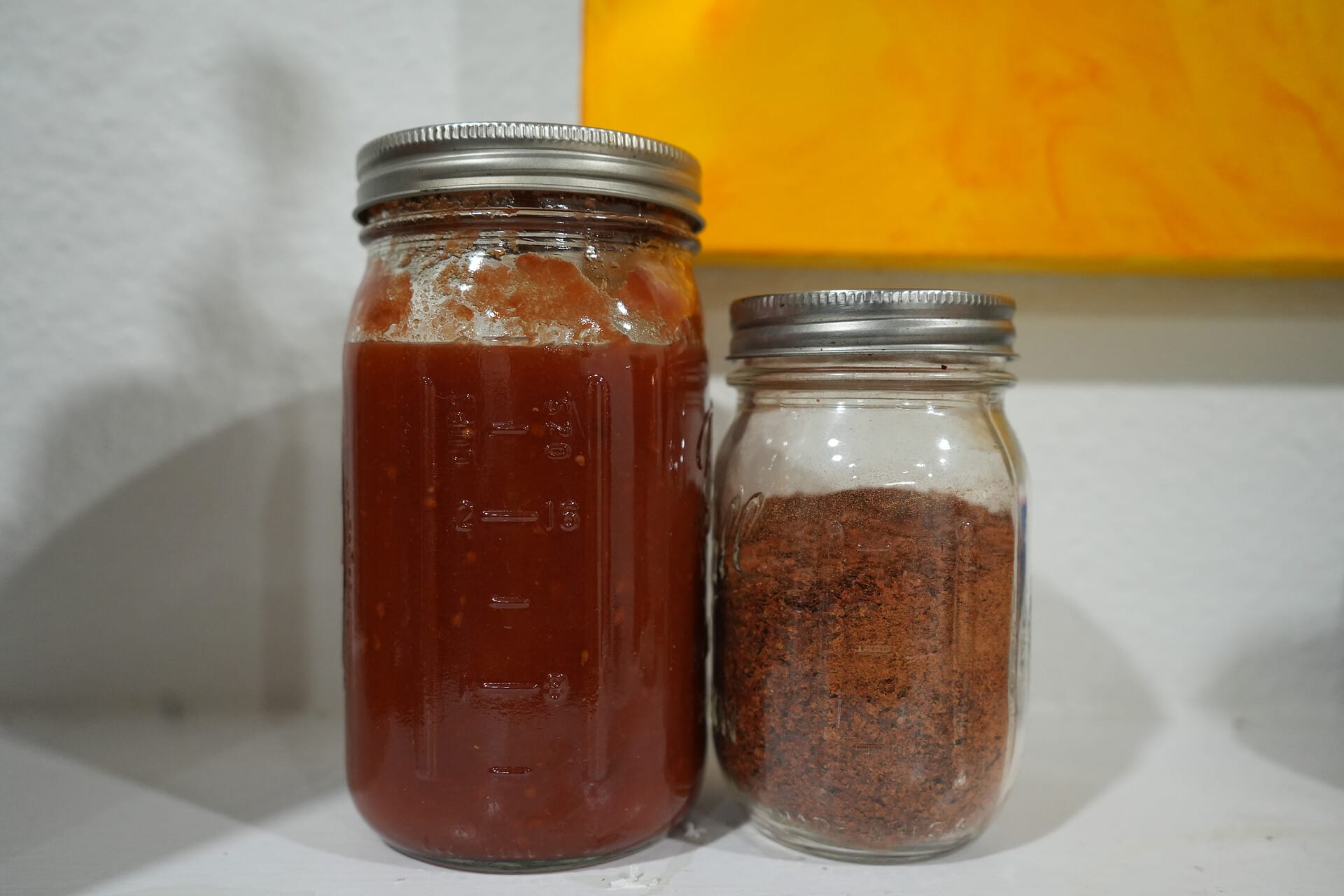
Once the jars cooled, they're done. The transformation from peak tomato to distilled essence is complete. Just needs a label and it's bedtime.
I would not blame anyone that popped a jar first thing in the morning after this ordeal.
I've done it myself.
No notes found here on how I make my tomato powder. Maybe next year. This was plenty of work as-is and that's with 4 years of practice.
To make up for this obvious miss, I have some bonus photos that didn't make the final cut. Have them if you'd like. It's a whole wall of red.


